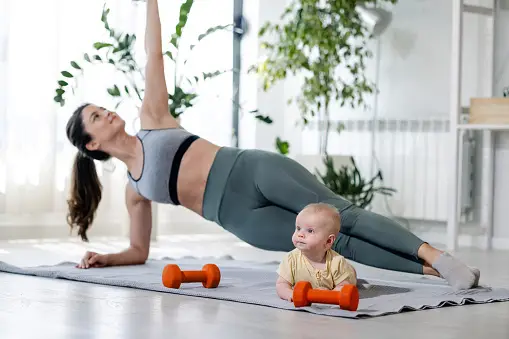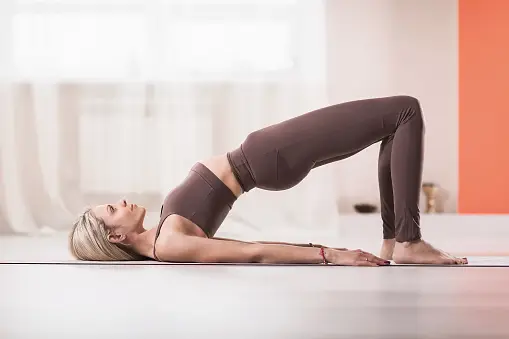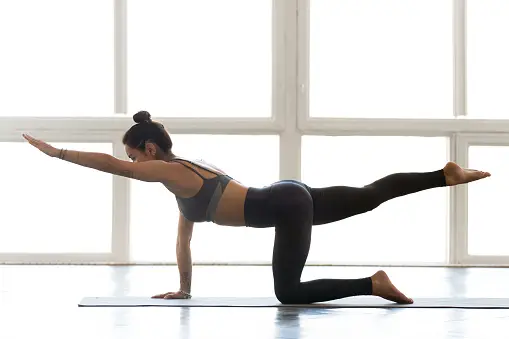With 619 million sufferers globally, low back pain (LBP) is the single greatest cause of disability worldwide. Actually, most people have at least one episode of LBP over their lifetime. Thankfully, therapy may be beneficial for the largest proportion of individuals with this illness. Although a variety of factors can cause low back pain (LBP), a lack of core strength is frequently one of them.
The low back is more vulnerable to injury due to muscle imbalances and weak core muscles caused by more sedentary work and sitting. Here are some typical causes of LBP that greater sitting duration can bring about:
- To support and stabilize the spine, the deep core muscles are designed to be activated for extended periods of time. The core does not move much while we spend our days slumped over in a chair. As a result, the brain sends less information to the core instructing it to “turn on” and safeguard the spine when needed.
- The lumbar spine is the starting point of the psoas major, one of the strongest hip flexors. This muscle can get shorter while you sit, which puts continuous strain on your low back.
- Known as “glute amnesia,” the powerful hip extensors known as the gluteal muscles become elongated and feeble. When these muscles aren’t able to perform their function in everyday tasks, other muscles, including the low back muscles, have to take over.
While avoiding sitting altogether is unrealistic, specific exercises can help counteract the effects of prolonged sitting and minimize your chance of developing LBP. Here are four effective body-weight exercises you can do anywhere to ward off LBP.
Table of Contents
Here are 4 exercises to help you reduce low back pain using your body weight
Plank

Nothing improves core stability like a plank, tried and true. Start with your legs outstretched and your elbows exactly beneath your shoulders to maintain a straight body. Push the floor away with your forearms and toes while you contract your quads, glutes, and core. Repeat three times, holding for a duration of 30 to 60 seconds, or as long as you can keep your form correct.
Boost It Up: Look for an unstable surface to make things more difficult. This can be accomplished by elevating one arm or leg, or by laying the feet or forearms on a soft pad or exercise ball. Throughout, your hips and shoulders should stay in alignment with one another.
Pare It Down: Lower the difficulty by resting the hands or forearms at a challenging but manageable height on a bench, table, or railing to maintain proper form.
Side Plank

The side plank, which involves activating the internal and external obliques, may be even more advantageous than the normal plank in terms of lowering the risk of lower back pain (LBP). Strengthening these muscles is essential because they aid in regulating the spine’s rotational movements. Start by placing your elbow exactly beneath your shoulder. Drive up through the lower obliques with the feet stacked or staggered until the body is in a straight line. Hold your hips and shoulders stacked. Repeat three times, holding for a duration of 30 to 60 seconds, or as long as you can keep your form correct.
Pare It Down: To lessen the strain on the core, lower one leg to the floor for extra support, or locate an elevated surface to rest the elbow and forearm.
Glute Bridge

By shifting their workload to the low back, weak gluteal muscles contribute to low back pain. Walking, running, squatting, and deadlifting are all made possible by the strong gluteal muscles; but, when these muscles aren’t strong enough, the back has to carry the majority of the weight. Start by placing your arms down by your sides in a sit-up position. To raise your hips and create a straight line from your heels to your shoulders, forcefully press through your feet and contract your glutes. After two seconds of holding, gently release. Do three sets of ten to fifteen repetitions.
Boost It Up: Try doing this exercise with one foot raised off the ground while keeping your hips level to up the difficulty.
Bird Dog

Start with your body in a quadruple position and your core active. Raise one arm and the other leg slowly to the level of your torso. You should still be facing the floor with your hips and shoulders. Hold the top position for 15 to 30 seconds, then slowly descend and repeat 10 to 15 times. On each side, repeat one to three times.
Boost It Up: Try a lateral bird dog instead of the usual flexion and extension associated with this motion. After you have both arms and legs extended to the maximum position, move both limbs a few inches laterally. This will make the main task much more difficult. After one to three sets of ten to fifteen repetitions, slowly return to the stretched position.
Last Words
Debilitating low back pain is a prevalent ailment. You can lower your chance of injury and strengthen your gluteal and core muscles with a suitable practice. You can do this exercise at home, in the gym, or at work using just your body weight. When working, keep your posture engaged and upright, and try not to spend too much time in one position to further preserve your low back.
